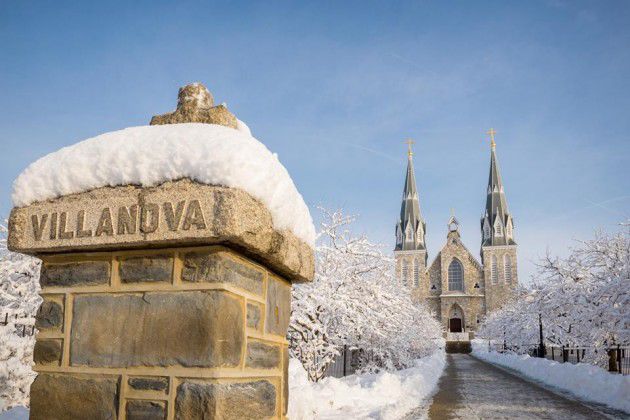Jack Frost fails to deliver: snow day controversy explored
February 5, 2015
Most can remember the suspense felt across campus last Monday, Jan. 26, when, with pajamas inside out and spoons under pillows, the student body collectively held their breath in anticipation of a long-awaited snow day. Many will also recall the morning after when, with confusion, anxiety and a hint of irritation frowm students and faculty alike, the NovaAlert verdict read that classes would continue with a delay until 10 o’clock, a minor consolation.
Students fretfully rushed to complete previously procrastinated assignments, bemoaning their misfortune and the injus- tice of being forced to make the trek to class when Cabrini College, less than two and a half miles away, had shut its doors for the day. Hits were put out on misleading meteo- rologists, and veterans of the Great Polar Vortex of 2014 chattered away hopefully at the prospects of another nine-and-a-half snow day season.
One thing became clear, students of the University take their snow days very seri- ously, something Bob Morro, the Associate
Vice President for Facilities Management here at the University, knows all too well. Ultimately, it is Morro who makes the deci- sion whether or not the school stays open.
“Our main criteria is determining if the campus will be safe,” Morro said, when asked about what went into the decision. “If a storm is predicted to happen at night, we try to let the students and faculty know by six the next morning.”
To succeed in meeting this deadline, Morro and his team face a grueling routine of constant analysis of weather sources as well as decisions made by local schools and communities. “We’ve usually got a crew on campus at or before five in the morning.” Morro recalled. “We’re here trying to figure out if we have enough time to clear the cam- pus and if the students will be safe.”
There’s also the additional element to consider of potential hazards to commuting faculty members and off-campus students, which make up approximately 30 percent of the undergraduate student body. “We have a lot of people coming a great dis- tance to get here, and we want to ensure their safety as well.” Morro takes these off- campus Villanovans especially into account when determining delays and evening class cancellations.
The University was joined in its decision to keep a normal schedule last Tuesday by Haverford College and its Executive Director of Campus Safety, Tom King. “In this par- ticular instance, the last storm, several of the predictive models trended towards a possibility of little or no precipitation as the night wore on,” King recalled about Winter Storm Juno.
“I was up at four, the morning of this snor’easter, checking out radar and predic- tions” King told of his hectic Tuesday morn- ing.“ By then it was apparent that there was a reasonable chance that we would not get much, if any, precipitation.”
Regardless of what school you go to, the process of determining class cancellations seems universally “touch-and-go.” Different information is taken into consideration by different administrators, meaning that even when Philadelphia Mayor Michael Nutter closes public schools and cancels garbage collection for the day, local universities can make differing decisions based off of their own information.


